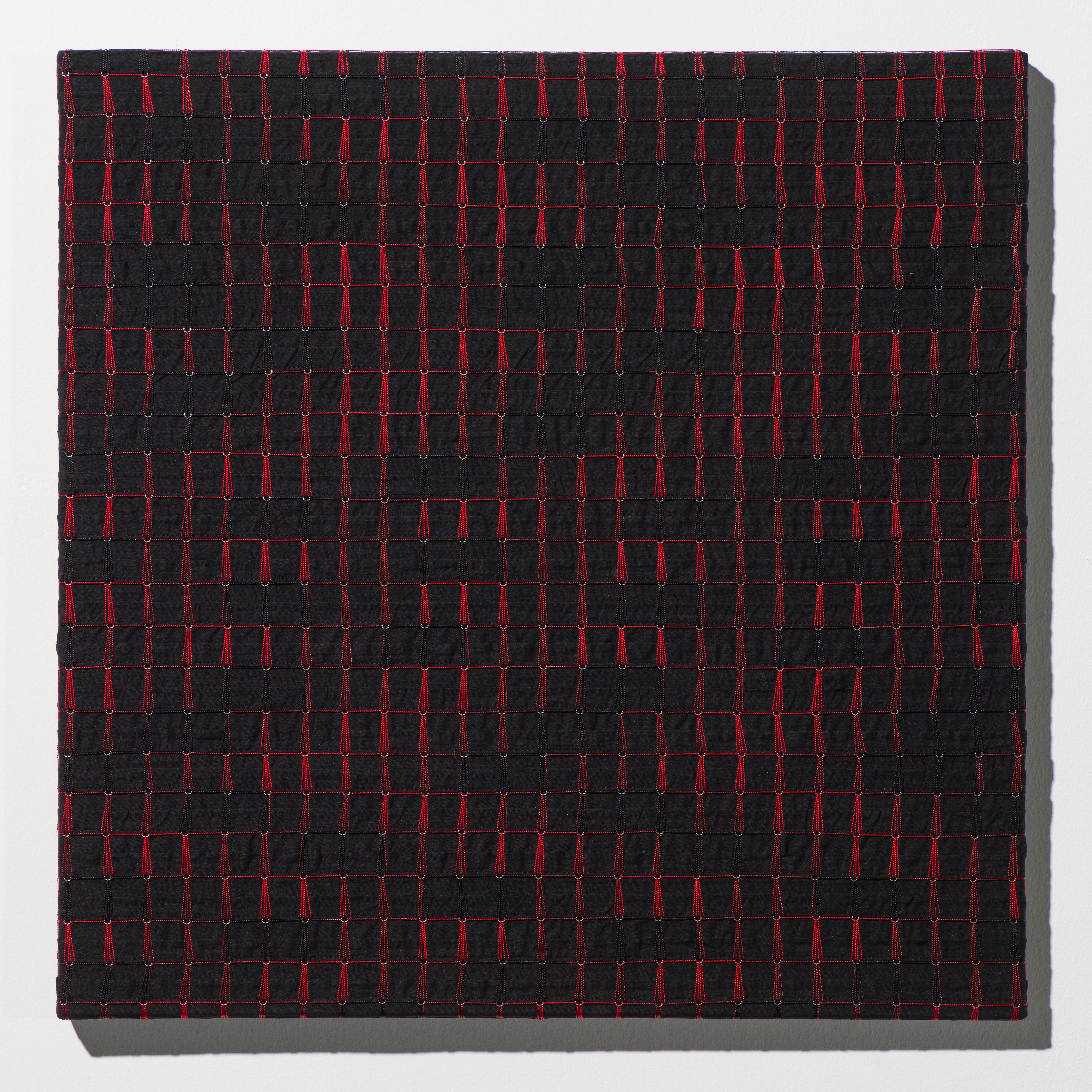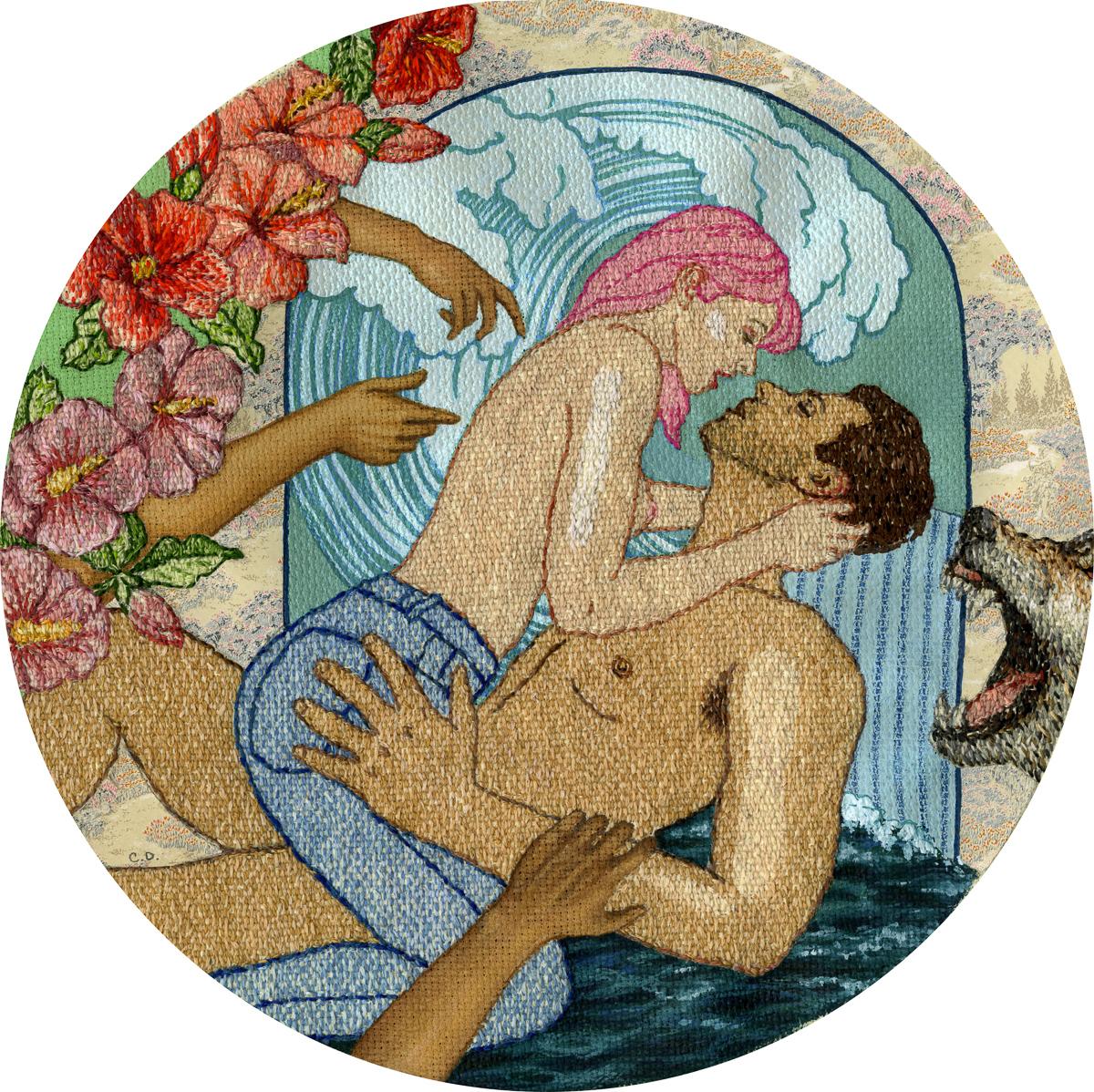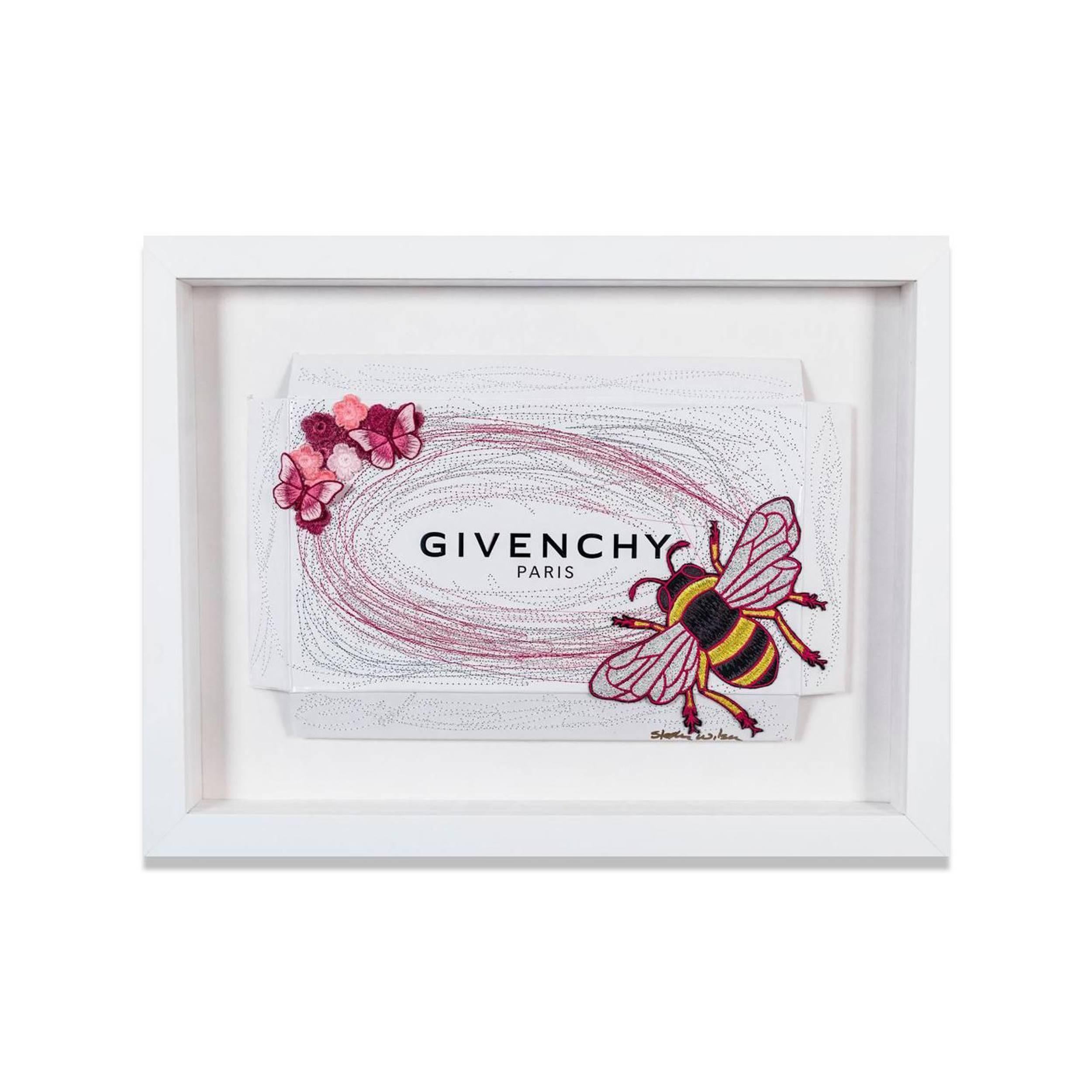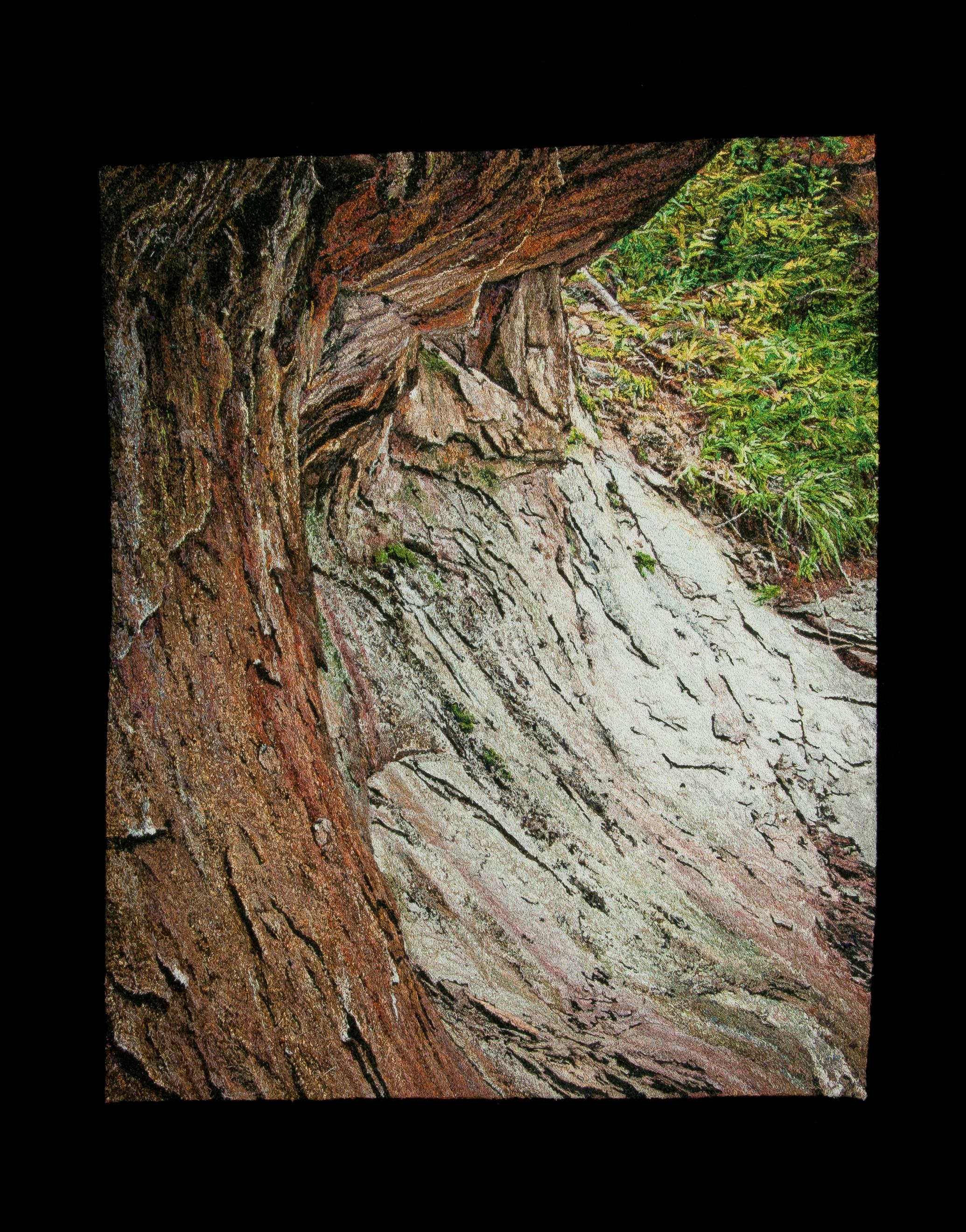Items Similar to Hungarian Rabbi Akiba Eger 19thC Judaica Folk Art Tapestry Needlepoint Sampler
Want more images or videos?
Request additional images or videos from the seller
1 of 8
UnknownHungarian Rabbi Akiba Eger 19thC Judaica Folk Art Tapestry Needlepoint Sampler
About the Item
Dimensions board backing is 2 X 18.5 board opening is 16.5 X 13 inches
19th Century framed tapestry of a Rabbi, embroidered sampler, with beaded script below. (it reads J. Eger Oberlandes Rabbiner or Oberlander Rabbiner) There is some sort of texture and dimension to his fur hat (Shtreimel) and coat collar. This is being sold without the frame..
Rabbi Akiba Eger (5521-5598; 1761-1838)
Rabbi Akiba Eger was one of the greatest scholars of his time, who had a great influence on Jewish life. He was born in Eisenstadt, Hungary, in the year 5521 (1761), nearly two hundred years ago. The city of his birth was a seat of learning for centuries, and his family was a family of scholars and Rabbis.Rabbi Akiba Eger, who was Rabbi in the famous community of Pressburg (also Hungary, but since 1913 it belonged to Czechoslovakia and was called Bratislava). He was invited to become Rabbi of the famous city of Posen, and in fact became the chief rabbi of the entire Posen province, though he did not carry that title. His famous son-in-law, Rabbi Moshe Sofer (known as the 'Chasam Sofer'), Rabbi of Pressburg, who had married Rabbi Akiba Eger's daughter. King Frederick III of Prussia honored him with a special medal. Rabbi Akiba Eger was recognized as a great authority on Jewish law, and many well known rabbis and Jewish leaders turned to him for advice and decisions on points of law.
"This sort of art, craft work, emerges from a long tradition of Jewish folk art.
Today, many of these artists are professionally trained and bring a fine arts sensibility to their Judaica work. This is a relatively new phenomenon. Only in the last few centuries have Jewish artists trained in the fine arts. For the greater part of Jewish history, most Judaica artists were untrained, and their art was not their life’s work, but was simply one form of devotion to God. Known today as “Jewish folk art,” the tradition of Jewish visual expression includes paper-cutting, creation of the mizrach and shivitti (two forms of decorative signs), and the art of micography (using words to create images). Looking with contemporary eyes at these primarily self-taught forms of expression offers inspiration and assurance that the visual arts hold a prominent place in Jewish civilization.
At first glance, any work of “folk art” may at first seem childish or naive; what makes it great art is that at second glance, the art reveals depth and substance. Jewish paper cutting was, for centuries, more or less of a hobby of a primarily male, religious population. These men, and women, included rabbis, yeshiva teachers, and students, people who had time to use their hands even as they focused on study and discussion.
Paper-cutting was an inexpensive art — no fancy materials were needed, just a scrap of paper, a pencil, a knife. At the same time, some artists used more expensive materials, such as parchment, resulting in paper-cut art better able to be preserved. The tradition of Jewish paper-cutting was borrowed by the Jews of the Middle Ages’ Christian and Muslim neighbors. It can be traced as far back as the 14th century, and it continued to play a major cultural role in Jewish tradition through the 19th and early 20th centuries.s
The craft takes a simple art–cutting paper to create a design (think of making a snowflake in grade school)–and transforms it into an expression of devotion. The artist would take a line of text, from Psalms, for instance, and would strive to bring the imagery of the text alive in the paper-cut.
As time went on, paper-cutting became more esteemed, and soon paper-cut designs became connected with certain lifecycle events and holidays. Artists used paper-cutting to illustrate ketubot (marriage contracts), for example, and would create certain designs for the Jewish festivals of Sukkot and Shavuot. While Jewish literary tradition focused on the importance of words, the folk art tradition brought visual representations of words and ideas to life.
Artists often used paper-cutting to create a mizrach (which literally means “east”). The mizrach was a wall hanging for the most eastern wall of the Jewish home, reminding them which way to face while praying–toward Jerusalem–and directing the family’s thoughts to that holy city during prayer. In Eastern Europe, the mizrach was frequently an object not just of devotion, but also of beauty. Elaborate mizrachim (plural of mizrach), created by paper-cutting techniques adorned many Jewish homes. Though the intention of the mizrach was to serve a simple, religious function, the art of the mizrach shows the high regard that was paid to good craftsmanship and beautiful aesthetic sense. Many mother and Jewish woman made a wimpel for their children's births. Another example of Jewish folk art, dating back to the Middle Ages, was the creation of the shiviti (meaning “awareness.”). Similar to the mizrach in that its function was to focus attention, the shivviti would hang in the synagogue. Inspired by a line from Psalms, “Shivitti Adonai Lanegdi Tamid”– I am ever aware of the Eternal One’s presence”–the shivviti employed the Hebrew letters “yud, hay, vav, hay” which together symbolize God’s name. It is interesting to note that while it was forbidden to try to utter the name of God, the shivviti used these letters in an artistic design to represent God’s presence. The shivviti might include other Biblical phrases or lines from Psalms, but the focus of its design was always the letters “yud, hay, vav, hay.” The shivviti, like the mizrach, was often created by paper-cutting, although examples of shivviti created by embroidery, drawing, and other media do exist. (Credit: My jewish Learning)
- Dimensions:Height: 22 in (55.88 cm)Width: 18.5 in (46.99 cm)
- Medium:
- Movement & Style:
- Period:
- Condition:wear commensurate with age. with some minor toning, staining. needs new mounting. mat has wear.
- Gallery Location:Surfside, FL
- Reference Number:1stDibs: LU38211835352
About the Seller
4.9
Platinum Seller
These expertly vetted sellers are 1stDibs' most experienced sellers and are rated highest by our customers.
Established in 1995
1stDibs seller since 2014
1,543 sales on 1stDibs
Typical response time: 1 hour
- ShippingRetrieving quote...Ships From: Surfside, FL
- Return PolicyA return for this item may be initiated within 3 days of delivery.
More From This SellerView All
- Italian Wool Felt Handmade Futurist Fortunato Depero Art Tapestry Wall HangingBy Ivana GaifasLocated in Surfside, FLIt is signed in a stitch Omaggio a Depero, Ivana, 2000 Fortunato Depero (1892 – 1960) was an Italian futurist artist and painter, writer, sculptor and graphic designer who worked in...Category
20th Century Futurist More Art
MaterialsWool, Felt, Thread
- Italian Wool Felt Handmade Futurist Fortunato Depero Art Tapestry Wall HangingBy Ivana GaifasLocated in Surfside, FLIt is signed in a stitch Omaggio a Depero, Ivana, 2000 Fortunato Depero (1892 – 1960) was an Italian futurist artist and painter, writer, sculptor and graphic designer who worked in...Category
20th Century Futurist More Art
MaterialsWool, Felt, Thread
- Scoli Acosta Large Contemporary Mixed Media Painting LA Artist Dakota NightshadeBy Scoli AcostaLocated in Surfside, FLDakota Nightshade (Native American, Indian piece) Mixed media (ink, paint etc. red thread stitching) Framed 43 X 57 sheet 36 X 49 Hand signed, dated and titled by artist. (with a location of LA noted) This came with a group of 4. they are all signed and one had a Daniel Reich Gallery label verso. Scoli Acosta...Category
Early 2000s Contemporary Abstract Paintings
MaterialsAcrylic, Thread, Ink, Mixed Media
- Scoli Acosta Large Contemporary Mixed Media Painting LA Artist External HorizonsBy Scoli AcostaLocated in Surfside, FLIn External Horizons Mixed media (ink, paint etc.) Framed 43 X 57 sheet 34.5 X 48 Hand signed, dated and titled by artist. (with a location of LA noted) This came with a group of 4. they are all signed and one had a Daniel Reich Gallery label verso. Scoli Acosta...Category
Early 2000s Contemporary Abstract Paintings
MaterialsInk, Mixed Media, Acrylic, Thread
- Hungarian Israeli Tourists Diorama Folk Art Doll Judaica Sculpture Magda WattsLocated in Surfside, FLMagda Watts (Israeli, b. 1928) Handmade Folk Art Sculpture Old Folks with a newspaper Hand signed to underside, Dimensions: 12"h x 14.5" l x 7.5"d. Mag...Category
20th Century Folk Art Figurative Sculptures
MaterialsMixed Media, Wood, Fabric
- Hungarian Israeli Tourists Diorama Folk Art Doll Judaica Sculpture Magda WattsLocated in Surfside, FLMagda Watts (Israeli, b.1928) Handmade Folk Art Sculpture Tourists. Hand signed to underside, Dimensions: 12"h x 14.5" l x 7.5"d. Magda Watts, Holocau...Category
20th Century Folk Art Figurative Sculptures
MaterialsWood, Fabric, Mixed Media
You May Also Like
- Aqua FieldBy Denise YaghmourianLocated in Phoenix, AZfabric, thread, and eyelets on canvas, framed Denise Yaghmourian’s material based sensibility results in works that reference Feminism, Minimalism, Post-Minimalism, the Pattern and ...Category
2010s Contemporary Mixed Media
MaterialsFabric, Canvas, Thread, Mixed Media
- Red Sky FieldBy Denise YaghmourianLocated in Phoenix, AZfabric, thread, and eyelets on canvas, framed Denise Yaghmourian’s material based sensibility results in works that reference Feminism, Minimalism, Post-Minimalism, the Pattern and ...Category
2010s Contemporary Mixed Media
MaterialsThread, Mixed Media, Fabric, Canvas
- "It Gives and It Takes" Mixed Media Fiber Art, Embroidery Thread, Acrylic PaintLocated in New York, NYCara De Angelis is a visual artist working in the northeastern United States. She received her master’s degree in Fine Art from the New York Academy of Art, where she participated in Master Classes with artists Jenny Saville and Vincent Desiderio...Category
2010s Contemporary Mixed Media
MaterialsCanvas, Thread, Paper, Mixed Media, Acrylic
- GIVENCHY BUMBLE BEEBy Stephen WilsonLocated in Tulsa, OKStephen Wilson, GIVENCHY BUMBLE BEE, embroidery on luxury box, 16.00 X 21.00 in, $2,400.00 Stephen is anything but traditional. The medium used for his pie...Category
2010s Contemporary More Art
MaterialsFabric, Thread, Mixed Media
- "Overhang", Contemporary, Embroidery, Photographic, Realism, Framed TextileBy Carol ShinnLocated in St. Louis, MOCarol Shinn is a studio artist who lives in Fort Collins, Colorado. She is known internationally for photo-based machine-stitched images. She has taught many classes and workshops across the United States, and her pieces are in numerous public and private collections. Articles about her work have been featured in many publications. "Overhang", Contemporary, Embroidery, Photographic, Realism, Framed TextileCategory
2010s Contemporary More Art
MaterialsTextile, Thread, Mixed Media
- "Fading Rose", Contemporary, Framed, Textile, Embroidery, PhotorealismBy Carol ShinnLocated in St. Louis, MOCarol Shinn is a studio artist who lives in Fort Collins, Colorado. She is known internationally for photo-based machine-stitched images. She has taught many classes and workshops across the United States, and her pieces are in numerous public and private collections. Articles about her work have been featured in many publications. Selected Collections Racine Art Museum, Racine, WI Lloyd Cotsen Textile Traces Collection, George Washington University, Washington, DC. Mesa Arts Center, Mesa, AZ Museum of Arts and Design, New York City, NY Denver Art Museum, Denver, CO Sky Harbor International Airport, Phoenix, AZ University of NM, Albuquerque, NM Blg K Univ. of NM, Los Lunas,NM West Valley Art Museum, Surprise, AZ Landmark Bank, Madill, OK City Heritage Art Collection, Tempe, AZ North Carolina State University, Raleigh, N.C.) Snell and Wilmer Law Offices, Phoenix, AZ Cross Medical Center, Yonkers, NY American Express, Phoenix, AZ Mint Museum of Craft & Design, Charlotte, NC "Fading Rose...Category
2010s Contemporary Mixed Media
MaterialsCanvas, Thread, Mixed Media





